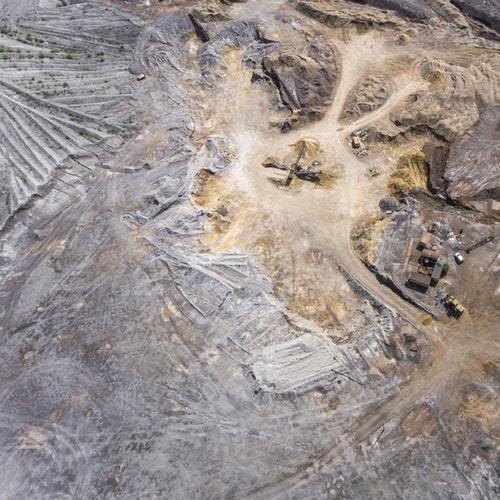Gold and AUD Correlation - a Guide to Trade Them
Gold has fascinated humankind for ages. This curious yellow metal has some unique qualities that make it a valuable commodity in 2018, just as it was a couple of thousand years ago.
As a precious metal, it is part of a select group of chemical elements like Silver, Platinum, Palladium, and Rhodium. In Forex trading, the classic offering of a broker will typically include gold and silver as CFD’s (Contracts for Difference).
The gold market, just like the precious metal, is unique in every way. It depends on the above and below ground reserves, as well as the annual production output.
In parts of the world, (e.g., India), gold plays a crucial role in the way society is built. It is a store of value today as it was a couple of millenniums earlier.

Gold as an investment has a long history. Since its discovery, armies plundered gold from regions conquered.
Wars have been fought because of gold, and even modern central banking started when gold was an issue for the Federal Reserve of the United States.
In Forex trading, everything has to do with inflation. If a central bank changes the monetary policy, it is doing it because inflation misses the target.
While the recent years brought low inflation, traders tend to forget what happens when inflation spirals out of control. Hyperinflation causes more damage than deflation, and much faster.
When people lose faith in the fiat currency, depreciation starts. At first slowly, and then so fast that there’s nothing to do to protect their belongings.
Suddenly, attention shifts to physical assets (houses, cars, etc.) and things along these lines. Obviously, to gold too.
History is full of episodes when inflation ravaged an economy. In Germany during the first World War, the hyperinflation happened so fast and was so acute that from the moment people received their wages, and until they rushed in a shop to buy something, the Deutsche Mark lost three times the value.
It became far more expensive to print the banknotes than the value of the notes themselves. Sound familiar? Venezuela in 2018 shows hyperinflation is still possible. The irony of it is that the country sits on one of the largest oil reserves in the world.

Gold as an Investment
Under the Bretton Woods agreement, the U.S. Dollar became the most dominant currency in the world. Ravaged by war, European nations couldn’t argue with the Americans and agreed for the Dollar to become the worlds reserve currency.
It was clear to everyone that the Americans would enjoy tremendous benefits out of it. They’d finance the potential deficit with foreign demand for the dollar. However, the other countries managed to negotiate a so-called gold standard.
Under it, the Fed in the United States needed to back the number of dollars in circulation by gold held in its vaults. As such, the dollar became as good as gold!
But running a deficit for years made it impossible to keep the gold standard. In a shocking announce in 1971, the Nixon administration decoupled the dollar from the price of gold, and the entire financial world stopped for a second.
What would happen to the dollar? As it turned out, the trust in the Federal Reserve System was so significant (or maybe there wasn’t an alternative to it), that the dollar survived. Moreover, major central banks in the world dropped their peg to gold too.
Today, no central bank functions under the gold standard. Yet, gold as an investment didn’t lose its status.
As gold protects against inflation, it is a store of value. Also, it is a store of trust.
For this reason, in capitalistic countries (Western world), gold doesn’t play an essential role in everyday life like in the Eastern part of the world. Unstable governments and inflationary policies have made people untrusting of the policies and storing part of their savings in gold.
It is no wonder gold is a “mirage” for countries like India, and throughout the Arab world, but not, for example, in the United States.
Gold in Forex Trading
In Forex trading, the symbol for gold is XAUUSD, and it is a CFD. It acts as a classic currency pair, only that the margin needed to trade it (the collateral) is bigger than in the case of a classic currency pair.
The price of gold is typically inversely correlated with the U.S. Dollar. Naturally, when the XAUUSD rises, the USD falls, and the opposite is true as well.
Hence, all the USD pairs enjoy the same correlation, as the USD will lose value against other currencies too. As such, the GBPUSD, EURUSD, NZDUSD and AUDUSD rise together with the price of gold in dollars.
But the degree of correlation between the currency pairs mentioned above and the price of gold differs. They may all rise, but percentages may vary.
What’s the reason for this?
Gold and the Australian Dollar
Because Australia is the world’s third-largest gold producer (miner), its economy depends on the price of gold. Mining gold is an expensive process and labor-intensive.

For economic reasons, it doesn’t make any sense to mine for something if the process is more expensive than the output. Hence, in times with depressed gold prices, the mining industry suffers.
As such, the Australian economy is the first one to suffer. People are laid off; unemployment is on the rise, the government pays more unemployment benefits, consumer spending falls because of lower disposable income, and so on.
A vicious circle that grips the economy starts. What market is the first one to see all these changes? The currency market, of course!
For this reason, gold and the AUD enjoy a direct correlation. Historically, the AUDUSD and gold prices have a direct correlation degree of over 80%.
This is one of the reasons why the Australian Dollar is called a commodity currency. Just like the CAD, it depends on the value of a commodity, only a different one.
In Forex trading, knowing that a correlation like this one exists helps to avoid overtrading. It doesn’t make any sense the be long AUDUSD and short XAUUSD unless it is part of a hedging strategy meant to protect the trading account.

Conclusion
It is fascinating to see how far people go to protect their investments. And, throughout history, no other investment proved as efficient as gold.
Some view gold as money. While not official money, major central banks in the world fight to own as much of it as possible.
People go to great lengths to store it. They’ve built bunkers in one of the safest places in the world (the biggest gold vault in Switzerland literally lies beneath a huge mountain), with great costs of running and maintaining it.
It is, perhaps, even more fascinating to understand why people spend so much money in digging this metal up, only to throw it back in a vault towards the earth core.
Because it is the only “money” or form of value that stood the test of time, we can only assume it will keep doing that for the years to come. As such, owning a bit of gold never hurts for protecting a trading account or long-term investments against inflation.
For today’s Forex trading, the AUDUSD and gold correlation will keep existing until production levels change. For this reason, understanding this correlation helps avoid the perils of overtrading.


